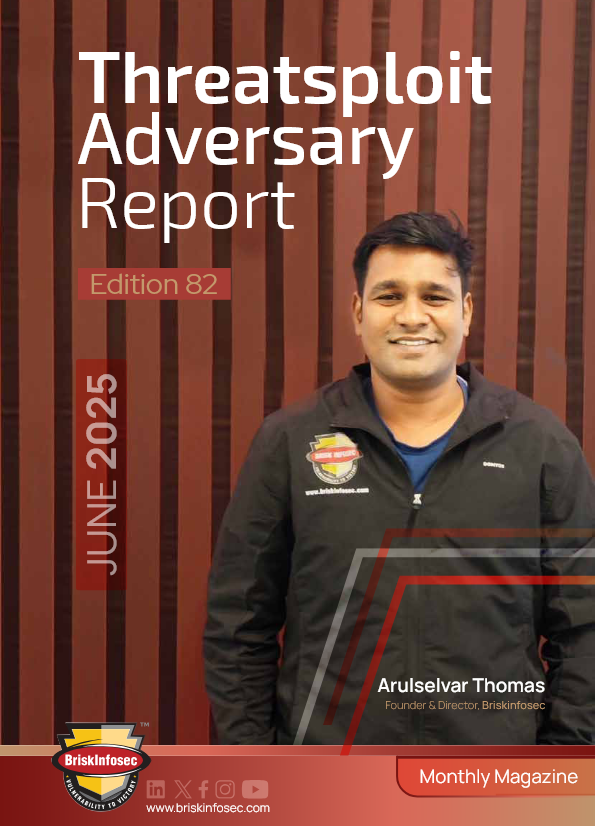Table Of Contents:
- The Evolving Landscape of Cloud Security
- Understanding the Shared Responsibility Model in the Cloud
- Key Cloud Security Threats and Vulnerabilities in the Current Environment
- Best Practices for Strengthening Your Cloud Defenses
- Implementing Robust Access Management and Authentication
- The Role of Data Encryption in Cloud Security
- Importance of Regular Auditing and Monitoring
- Developing a Comprehensive Disaster Recovery Plan for the Cloud
- Leveraging Cloud Access Security Brokers for Enhanced Control
- The Human Element Empowering Employees in Cloud Security
- Emerging Trends in Cloud Security to Watch
- AI Driven Security Solutions
- Zero Trust Architectures
- Automation and Orchestration
- Conclusion Navigating the Future of Cloud Security
The Evolving Landscape of Cloud Security
The proliferation of cloud services has revolutionized the way organizations operate, offering unprecedented scalability, flexibility, and cost-efficiency. Businesses across all sectors are leveraging cloud infrastructure and platforms to host critical applications, store vast amounts of data, and drive innovation. However, this digital transformation has been accompanied by a parallel surge in sophisticated cyberattacks specifically targeting cloud environments. As more valuable information resides in the cloud, it becomes an increasingly attractive target for malicious actors, necessitating a continuous evolution of security strategies to effectively counter this dynamic threat landscape. Understanding the nuances of cloud security and implementing robust defenses is no longer optional but essential for maintaining business continuity and customer trust.
Understanding the Shared Responsibility Model in the Cloud
At the heart of securing cloud environments lies the critical concept of the shared responsibility model. This framework delineates the distinct security obligations between the cloud service provider and the user. Cloud providers assume responsibility for the security of the cloud infrastructure itself, encompassing the physical data centers, network infrastructure, and foundational services. This includes protecting the hardware, software, and networking components that underpin the cloud environment. Conversely, the user bears the responsibility for security in the cloud, which includes safeguarding their data, applications, configurations, and access controls within the provider's infrastructure. A significant number of cloud security incidents arise from a lack of understanding or insufficient attention to the user's responsibilities within this model. This gap underscores the paramount importance of comprehensive user education and clearly defined roles and responsibilities within an organization's cloud security framework. Neglecting these user-side responsibilities can inadvertently create vulnerabilities, regardless of the robust security measures implemented by the cloud provider.
Key Cloud Security Threats and Vulnerabilities in the Current Environment
The current cloud security environment is characterized by a range of persistent and evolving threats that organizations must be vigilant against. Phishing attacks, for instance, have become increasingly sophisticated, often employing social engineering tactics to deceive users into divulging their cloud credentials. The human element remains a significant factor in the success of these attacks, highlighting the crucial role of security awareness training in mitigating this risk. The increasing sophistication of phishing attempts, potentially leveraging artificial intelligence to create more convincing and targeted attacks, necessitates continuous education to ensure employees can recognize and avoid these threats. Another prevalent challenge is misconfigurations, which are common errors that occur during the setup and management of cloud resources, often leading to significant security vulnerabilities. Examples such as publicly accessible storage buckets or overly permissive access controls demonstrate how simple oversights can expose sensitive data. The complexity of cloud environments, coupled with the potential for human error, makes misconfigurations a persistent issue, emphasizing the need for automation and continuous monitoring to promptly detect and rectify these weaknesses.
The Persistent Risks of Insider Threats and Insecure APIs
Insider threats also pose a considerable risk to cloud security, originating from malicious or negligent employees who have legitimate access to cloud resources. These threats can manifest as accidental data leaks or intentional data theft, making them particularly challenging to detect. Implementing the principle of least privilege, which grants users only the minimum necessary access, and diligently monitoring user behavior are critical strategies for mitigating these risks. Furthermore, insecure APIs, which facilitate communication between different cloud services and applications, represent another significant attack vector. Poorly secured APIs can allow attackers to bypass authentication mechanisms and gain unauthorized access to sensitive data, underscoring the importance of robust authentication, authorization protocols, and regular API security audits. Finally, organizations must be prepared for zero-day vulnerabilities, which are exploits that target previously unknown software flaws in cloud platforms or applications. These vulnerabilities are particularly dangerous as no immediate patches are available. While complete prevention is difficult, staying informed about emerging threats, applying patches promptly upon release, and deploying intrusion detection and prevention systems can help minimize the potential impact.
Best Practices for Strengthening Your Cloud Defenses
To effectively strengthen cloud defenses against these threats, organizations should prioritize implementing robust access management and authentication measures. Enforcing Multi-Factor Authentication (MFA) for all user accounts, especially those with administrative privileges, adds a critical second layer of security. Various MFA methods, including biometrics and security tokens, can be employed to enhance protection. Notably, passwordless authentication is gaining traction as a more secure and user-friendly alternative to traditional passwords, reducing the risks associated with weak or stolen credentials. Adhering to the Principle of Least Privilege (PoLP) is also essential, ensuring that users are granted only the minimum level of access required to perform their job functions. Regular reviews and audits of user roles and permissions, along with the implementation of Single Sign-On (SSO) for streamlined and secure access management, further contribute to a strong security posture. Modern Identity and Access Management (IAM) solutions are evolving to include more sophisticated methods like biometric and context-aware access, enhancing both security and user convenience.
The Fundamental Role of Data Encryption
Data encryption plays a fundamental role in cloud security. Encrypting data at rest using robust algorithms such as AES-256 and encrypting data in transit with protocols like TLS are critical best practices. Implementing strong key management practices, including regular key rotation and secure storage of encryption keys, is equally important. Organizations may also consider advanced encryption techniques like homomorphic encryption, which allows computations to be performed on encrypted data without decryption. While encryption is a cornerstone of cloud security, advancements in areas like hardware acceleration are helping to address potential performance overheads associated with encryption processes.
Importance of Regular Auditing and Monitoring
Regular auditing and monitoring are indispensable for maintaining a strong cloud security posture. Organizations should conduct periodic security audits to proactively identify vulnerabilities and misconfigurations in their cloud environments. Implementing continuous monitoring of network traffic and user activity is crucial for detecting any suspicious behavior that may indicate a potential threat. Utilizing automated tools for continuous compliance monitoring and configuration checks can significantly enhance efficiency and accuracy. Regular audits of data backup and disaster recovery processes are also vital to ensure data can be effectively recovered in the event of an incident. The trend is shifting towards continuous monitoring as a standard practice, recognizing that the dynamic nature of cloud environments requires constant vigilance rather than infrequent assessments.
Developing a Comprehensive Disaster Recovery Plan for the Cloud
Developing a comprehensive disaster recovery plan tailored for the cloud is another critical element of cloud security. This plan should establish clear Recovery Time Objectives (RTOs) and Recovery Point Objectives (RPOs) to minimize downtime and data loss. Implementing robust data backup and replication strategies, including options for off-site or multi-cloud backups, ensures data resilience. The plan should also define clear failover and failback procedures to maintain business continuity during disruptive events. Regular testing and updating of the disaster recovery plan are essential to validate its effectiveness. Organizations can choose from various cloud-based DR strategies, such as Backup and Restore, Pilot Light, Warm Standby, and Full Replication, depending on their specific needs and recovery requirements. Cloud-based disaster recovery offers significant advantages over traditional methods, including enhanced scalability, flexibility, and cost-effectiveness.
Leveraging Cloud Access Security Brokers for Enhanced Control
Cloud Access Security Brokers (CASBs) provide an additional layer of control and visibility over cloud usage. CASBs act as intermediaries between users and cloud applications, offering functionalities such as visibility into cloud app usage, enforcement of security policies, detection of threats, and prevention of data loss. They can be deployed in different modes, including API-based and proxy-based architectures. The role of CASBs is evolving as they increasingly become integrated into broader Secure Access Service Edge (SASE) solutions, which address security needs beyond the traditional network perimeter in today's distributed cloud environments.
The Human Element: Empowering Employees in Cloud Security
Recognizing that employees are a vital component of cloud security, organizations must invest in empowering them through comprehensive and ongoing security awareness training programs. These programs should cover essential topics such as recognizing phishing attempts, practicing strong password security, proper data handling procedures, and knowing how to report security incidents. Training should be tailored to specific job roles and the unique risks they may encounter, and should utilize engaging and interactive methods to improve knowledge retention. Fostering a security-conscious culture, where employees understand their responsibilities and feel comfortable reporting suspicious activities without fear of reprisal, is equally important. Leadership plays a crucial role in championing security awareness initiatives and setting a positive example for the entire organization. The focus of security awareness training should shift from traditional, passive methods to more interactive and personalized approaches that lead to better long-term behavior change.
Emerging Trends in Cloud Security to Watch
The landscape of cloud security is constantly evolving, with several emerging trends poised to shape its future. AI-driven security solutions are becoming increasingly prevalent, leveraging Artificial Intelligence (AI) and Machine Learning (ML) to enhance threat detection and response capabilities in the cloud. AI's ability to analyze vast datasets in real-time allows for the identification of subtle anomalies and potential threats that might be missed by traditional security tools. AI-powered platforms are also being used for automated security validation and Cloud Security Posture Management (CSPM), providing proactive defense mechanisms. In this evolving landscape, AI is proving to be a double-edged sword, requiring organizations to not only defend against AI-powered attacks but also to strategically leverage AI to bolster their security defenses.
Zero Trust Architectures
Zero Trust architectures are also gaining significant traction as a foundational approach to cloud security. The core principle of Zero Trust is that no user or device should be inherently trusted, regardless of their location or network. This model emphasizes the need for continuous verification of user identities, devices, and access privileges before granting access to cloud resources. The adoption of Zero Trust is particularly growing in critical sectors, reflecting its importance in securing increasingly complex and distributed cloud environments, especially with the rise of remote and hybrid work models.
Automation and Orchestration
Finally, automation and orchestration are playing an increasingly vital role in cloud security operations. Organizations are leveraging automation to streamline routine security tasks, improve efficiency, and reduce the potential for human error. This includes automation in areas such as configuration management, vulnerability scanning, and incident response, helping security teams to scale their operations and focus on more strategic initiatives, especially in the face of a persistent cybersecurity skills gap.
Conclusion
In conclusion, securing the cloud requires a proactive, multi-layered approach that encompasses technological controls, robust processes, and a strong security-conscious culture. As the threat landscape continues to evolve, organizations must remain vigilant and adapt their security strategies accordingly. By understanding the shared responsibility model, addressing key threats, implementing best practices, empowering employees, and staying abreast of emerging trends like AI and Zero Trust, businesses can effectively fortify their digital realm and navigate the future of cloud security with confidence.


